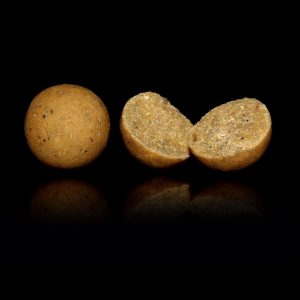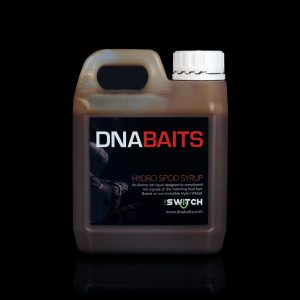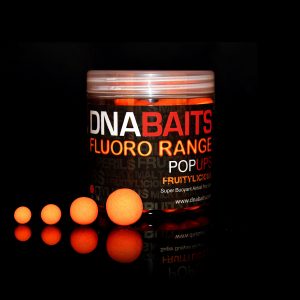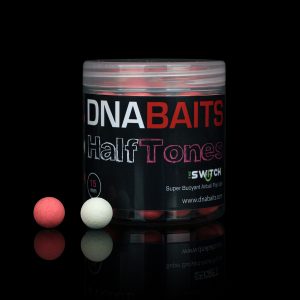
Canal Carping
Nathan Luckham has been targeting the nomadic carp of his local canals for years. In this piece, he explains why he thinks there are three key factors people must get right if they are to succeed on canals.
The mystery of the canal and what lives within its waters has always intrigued me. At a young age I spent many, many hours on its banks float fishing for smaller species, but as I got older and more experienced, I turned my attentions to carp.

I just love canal carping
Location
Location is the number one thing when it comes to canal carping; there is no point fishing in a swim or area that’s devoid of fish. My spring fishing actually starts in late autumn with me taking notes of where the reeds, weedbeds and lily pads are before they die off over the winter. I’ve had great success in the spring fishing over new underwater growth like lily shoots or reeds, as this is where the natural food will appear. Once you’ve found areas the carp are comfortable visiting, it’s worth noting down, as canal/river carp can be very nomadic and will visit the same areas at the same time of the year, year after year.
There is no substitute for spending time at your venue, so in the lead-up to spring, I will spend time down on the canal walking its banks trying to find signs of carp, looking in the snags, etc. Being a public place, there will usually be a duck-feeding area which throughout the year will see bird feed, bread, etc., some of which will find its way to the canal bed. These areas are not to be ignored, as the over the years the carp will have associated these areas with food and will regularly visit them.

With miles of water for fish to swim along, getting location right is crucial

Where are they hiding?
Bait
Bait is second on my list of things to consider. What type of bait I should I use? How much bait should I use? Should I prebait? Should I try to create spots? There are a few trains of thought on baiting in the spring. A lot of people swear by single-hookbait fishing. I’ve had success on this method in the past, but my best spring sessions have been when I have created/harvested spots through the introduction of bait. With this method, I try to get the carp to keep visiting my spots throughout the spring and clean the bottom of the canal bed to help present my rigs. To do this there is no better bait than particles; these tiny food items will help keep the carp in the area for long periods of time rooting around on the bottom. I typically boil up a couple of large buckets of mixed particles (hemp, partimix and maize) and then add my chosen boilies, both whole and chops.
This year I’ve been using the Switch, which I have every confidence in. I will also add a good helping of the Switch Hydro Spod Syrup and some salt. Ideally this concoction will then be left for a few days before priming my spots. Typically, I’ll bait up my spots every couple of days depending on the fish activity. I’ll also start to increase the boilie content of my mix as the season goes, as I want the carp to get used to eating my boilies and associate them as a good food source, as therefore they will actively search out my bait.

Prebaiting and priming spots with particles is a big edge

I like to use Betastim on my hookbaits and Switch Hydro Spod Syrup on my freebies
Hookbaits
With the massive array of hookbaits on the market these days, it can be quite daunting as to what to use. My advice would be to pick two or three different colours and a ‘match-the-hatch’ bait. For most of my fishing, I like to use high-attract, high-vis baits, and even more so in the spring, as the carp will be just waking up from their long winter slumber and a high-attract, high-vis bait will often get you a quick bite.
My preferred colours would be yellow/orange, white and pink. This spring I’ll be using PB and Fruitylicious fluoro pop-ups, as well as the Switch Half Tones pop-ups. These are excellent hookbaits in their own right, but I like to increase that attraction by adding a few drops of Betastim liquid, allowing it to soak into my hookbaits before reapplying and then adding some Hydro Liver Powder to create an outer coating in the same way you can make the EVO range. This outer coating will break down gradually, releasing attracters into the water column for several hours, thus increasing the chances of a bite.

My preferred hookbaits for canal carping
Rigs
When it comes to rigs and spring fishing, I like to use a pop-up rig on a lead-clip system. I have chopped and changed between different pop-up rigs over the years, but have now settled on one rig I use for 90% of my pop-up fishing, my trusty combi multi-rig. It’s a bit fiddly to tie at first, but once you have mastered it, it’s well worth the effort. I had most, if not all, of my carp on this rig last year.
I like to fish this style of rig over fairly clean bottoms and like to feel for a drop. The drop is a very important part of my fishing. I don’t mind casting several times to find the right spot, as once found, I can be ultra-confident I’m fishing 100% effectively.
I remember on one overnighter casting out about eight or nine times trying to get the drop I was after. I wasn’t worried about the constant casting, and my reward for getting it right was a lovely 20lb-plus mirror.
When it comes to weedy conditions, I probably wouldn’t fish this rig, as the fluorocarbon hooklink might not sit flat and the hookbait might not be presented correctly. If I can’t find any clean spots amongst the weed, I will swap over to a chod rig or solid bag where the lead can be ejected.
When fishing the canal, it is also important to use strong, reliable components and fairly big hooks, such as a size 6 or 4. Generally canals have lots of hidden underwater snags, as people will throw anything in the canal; I’ve pulled out the odd bike and shopping trolley in my time! You really don’t want to be losing fish to these hidden obstacles.
Conclusion
If you follow the simple rules of getting the location right, using a good-quality bait and you can present your hookbait correctly, you won’t go too far wrong on canals. The fish don’t spook as easily as they do on lakes, as they are used to commotion, and many of them don’t get caught often, so they aren’t particularly riggy.
So, don’t overlook your local canal. There are some hidden treasures to be found and, if you are prepared to put in the time and effort, the rewards are there.

A memorable canal triumph after getting my location, bait and rigs absolutely spot on

An example of the quality carp on offer in canals





